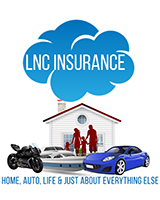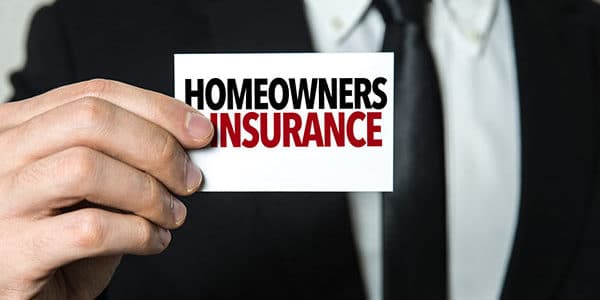By Guylaine Cadorette | Mar 09, 2021
Shopping for a new home is an exciting time for many Floridians, but few know that the home they choose could make or break their home insurance rates.
Whether you’re searching for an already built home or planning to construct one from the ground up, there are some important factors to consider before you purchase your dream home.
Is Hazard Insurance the Same as Homeowners Insurance?
If you are applying for a mortgage or shopping around for homeowners insurance, you may encounter a variety of terms defining the types of insurance you can purchase and what is included in your policy. Hazard insurance is not a separate policy from homeowners insurance. Instead, it is a specific coverage included in most homeowner’s insurance policies.
Hazard insurance provides specific coverage related to the structure of the dwelling. Besides covering hazard insurance, most home insurance policies will provide additional coverage for other types of damages, such as casualty insurance and liability coverage if someone sustains an injury on the property. Typically, homeowners insurance will contain the following coverages:
- Hazard coverage
- Dwelling coverage
- Additional structure coverage
- Personal property coverage
- Loss of use coverage
- Personal liability coverage
- Medical payments coverage
What Is Hazard Insurance?
Hazard insurance provides coverage specific to the structure of your home. When asking about the types of insurance you need, lenders will often specifically ask for a hazard insurance policy to ensure that if they issue you a loan at minimum, the structure on the property is covered. Because lenders often ask for hazard insurance specifically, the term’s everyday use has become ambiguous with its true definition.
What Does Hazard Insurance Cover?
Hazard Insurance typically provides coverage in two distinct types; named perils and open perils. Named perils will be specific to your policy and ensure coverage. In contrast, open perils are perils covered that are not explicitly named in your policy. Named perils may include:
- Home fires and fires caused by natural disasters
- Smoke damage
- Theft
- Vandalism
- Explosions
- Wind and damage caused by wind storms, such as falling trees
- Hail
- Lightning and burn damage caused by lightning
- Damage from vehicles
- Damage from aircraft
- Damage from riots or civil commotions
- Damage from volcanic eruptions
- Falling objects
- Damage from freezing pipes or AC
- Accidental damage from electrical currents
- Damage from the weight of snow, ice, or sleet
Open perils typically cover everything except the following:
- Earth movements, such as damage from earthquakes
- Ordinance of law and government action
- Some types of water damage
- Damages from power failures
- Damages from neglect of the property
- War
- Theft during active construction
- Intentional loss
- Mold, fungus, or wet rot
- Smog, rust, and corrosion
- Discharge and seepage of pollutants
- Birds, vermin, rodents, and insects
- Damage to the property from animals that you own
- Normal wear and tear of the dwelling
It is vital to review your insurance policies to understand what your personal policy lists and provides coverage for. Every policy may be unique and may not cover the same types of damage as previous policies you may have had.
Hazard Insurance Claim Reimbursement
If damage occurs to the dwelling covered by hazard insurance, you will be required to first pay the amount defined by your deductible, and the insurer will cover the remaining amount. Your reimbursement will depend on the reimbursement provisions in your policy, typically boiling down to one of the two following:
- Actual cash value. Actual cash value is typically the least expensive policy to purchase and often offers the smallest amount of reimbursement for damages. Actual cash value provides reimbursement for what your property was worth—including any wear or tear and depreciation at the time it was damaged or destroyed.
- Replacement cost value. Replacement cost value typically comes at a higher expense but provides reimbursement for the property—regardless of depreciated value. This means that your coverage replaces the damaged or stolen property at its full cost for a brand new item—regardless of wear, tear, and depreciation.
Is Hazard Insurance Required?
Homeowners’ policies and those that include hazard insurance are generally not a legal requirement. However, if you are applying for a mortgage or purchasing your home through a loan, your lender may require you to have a homeowners insurance policy that includes hazard insurance. This lender requirement ensures the lender that if something happens to the dwelling on the property, the asset is covered and financially protected. Some lenders may require you to pay a year’s worth of premiums on the insurance policy in advance of signing a home loan.
While obtaining homeowners insurance and subsequently hazard insurance may not be a legal requirement, it is best to get as much coverage as you can to ensure that your property and valuables are protected in the event of theft, vandalism, accidental damage, or damage caused by unforeseen events such as the weather.
If you own a property that you wish to use as a second home, you may need to consider homeowners insurance for second homes and vacation properties that include hazard insurance or a landlord insurance policy. Choosing between these types of policies will depend on your personal situation and individual needs.
How Much Is Hazard Insurance?
The cost of a homeowners insurance policy that includes hazard insurance will depend upon a few factors that include:
- The value of the property and dwelling
- What is included in the policy
- The policy limit
- The deductible amount
- If you choose reimbursement as actual cash value or replacement cost value
Considerations for selecting your insurance will depend on your personal budget and how much you can afford, as well as the type of coverage you decide is necessary to keep your property, dwelling, and personal belongings covered for reimbursement.
For example, you may choose to pay a smaller premium for an insurance policy that does not provide extensive coverage and only offers actual cash value. In the event of damage, your property may not be covered, or you may end up paying more to replace your damaged items.
If you choose a policy with more extensive coverage that includes replacement costs, you may rest assured knowing that your assets are protected; and that you will receive full reimbursement to replace your damaged items or property

